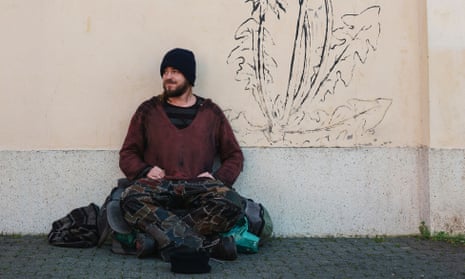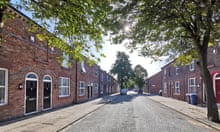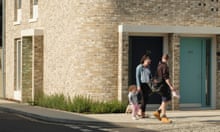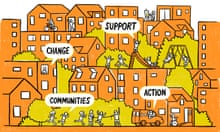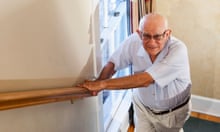The August eviction of 10 rough sleepers from an underpass leading to the Houses of Parliament brought the homelessness crisis to the very door of MPs.
But UK politicians and policymakers lack high-quality, independent data to tackle the problem. Who counts as homeless, how much help they require, and the factors driving the surge in people with nowhere to live have become intensely political issues. Support varies from council to council: some take very harsh views on who “deserves” help and who does not. A 2018 Guardian investigation revealed that in the past four years councils had given thousands of rough sleepers and homeless people one-way tickets on trains, buses and aeroplanes – sometimes to leave not just the area, but the country.
There are now 84,740 households, including 126,020 children, living in temporary accommodation – the highest level in more than a decade – while the children’s commissioner calculates there are 92,000 homeless young people in families who sofa-surfed with friends or relatives. But charity Shelter believes the true extent of the problem is much worse, driven by spiralling rents, austerity and a lack of social housing.
There are also issues when trying to calculate the number of people sleeping rough, the most visible but least common form of homelessness. The official figures showed a fall in rough sleeping last year for the first time since 2010,but highly controversial changes to the way councils record the figures prompted the UK statistics regulator to warn that the 2018 rough sleeper count should not be trusted. The government defended its rough sleeping initiative but has acknowledged the possibility of bias in the official data.
Even without definitive statistics, there is evidence that rough sleeping continues to rise. The “official” figures – a snapshot of everyone about to bed down or already bedded down on the street, in doorways, parks, tents and sheds – but not hostels or shelters – on a single night in autumn, suggest 4,677 rough sleepers. However, homeless charity Crisis estimates that 24,000 people were rough sleeping in Britain last year, and figures published annually by the Greater London Authority suggest 8,855 people bedding down on the capital’s streets. This is an 18% year-on-year rise, and more than double the number recorded in 2009-10, when 3,673 people were identified as rough sleeping in the city.
Quick GuideRough sleeping and homelessness in the UK
Show
Is rough sleeping getting worse?
The government claims rough sleeping in England fell for the first time in eight years in 2018, from 4,751 in 2017 to 4,677. But the body that oversees the quality of official statistics in the UK has said the number should not be trusted after 10% of councils changed their counting methods. Rough sleeping in London has hit a record high, with an 18% rise in 2018-19.
The numbers of people sleeping rough across Scotland have also risen, with 2,682 people reported as having slept rough on at least one occasion.
Shelter, whose figures include rough sleepers and people in temporary accommodation, estimate that overall around 320,000 people are homeless in Britain.
What’s being done about rough sleeping?
The government’s Homelessness Reduction Act 2017, which places new duties on state institutions to intervene earlier to prevent homelessness has been in force for more than a year, but two thirds of councils have warned they cannot afford to comply with it. In 2018, James Brokenshire, the housing secretary, announced a one-off £30m funding pot for immediate support for councils to tackle rough sleeping.
How does the law treat rough sleepers?
Rough sleeping and begging are illegal in ENgland and Wales under the Vagrancy Act 1824, which makes ‘wandering abroad and lodging in any barn or outhouse, or in any deserted or unoccupied building, or in the open air, or under a tent, or in any cart or wagon, and not giving a good account of himself or herself’ liable to a £1,000 fine. Leading homelessness charities, police and politicians have called on the government to scrap the law.
Since 2014, councils have increasingly used public space protection orders to issue £100 fines. The number of homeless camps forcibly removed by councils across the UK has more than trebled in five years, figures show, prompting campaigners to warn that the rough sleeping crisis is out of control and has become an entrenched part of life in the country.
Is austerity a factor in homelessness?
A Labour party analysis has claimed that local government funding cuts are disproportionately hitting areas that have the highest numbers of deaths among homeless people. Nine of the 10 councils with the highest numbers of homeless deaths in England and Wales between 2013 and 2017 have had cuts of more than three times the national average of £254 for every household.
What are the health impacts of rough sleeping?
A study of more than 900 homeless patients at a specialist healthcare centre in the West Midlands found that they were 60 times more likely to visit A&E in a year than the general population in England.
Homeless people were more likely to have a range of medical conditions than the general population. While only 0.9% of the general population are on the register for severe mental health problems, the proportion was more than seven times higher for homeless people, at 6.5%.
Just over 13% of homeless men have a substance dependence, compared with 4.3% of men in the general population. For women the figures were 16.5% and 1.9% respectively. In addition, more than a fifth of homeless people have an alcohol dependence, compared with 1.4% of the general population. Hepatitis C was also more prevalent among homeless people.
Sarah Marsh, Rajeev Syal and Patrick Greenfield
In June, an investigation into tent cities in the UK by the Guardian found that street homelessness was becoming more established, with a growing number of people creating small encampments. Reports to councils about homeless encampments increased from 277 in 2014 to 1,241 in 2018, and councils cleared more than 200 camps last year. Tent cities, whose inhabitants often refuse help from the state and live together for safety, could become a normal part of life in the UK, as they are in Los Angeles and other US cities, if sustained, well-funded help is not forthcoming.
Housing First – a much-lauded system now being trialled by some UK authorities – provides stable accommodation alongside health and wellbeing support. But most homeless people are not living on the streets with addiction problems; they just struggle to afford to live.
Without better information about homelessness, it’s hard to see how the issue can be tackled. And not all data is being used to positive ends: the Home Office is seeking access to data about rough sleepers in London to inform immigration decisions.
